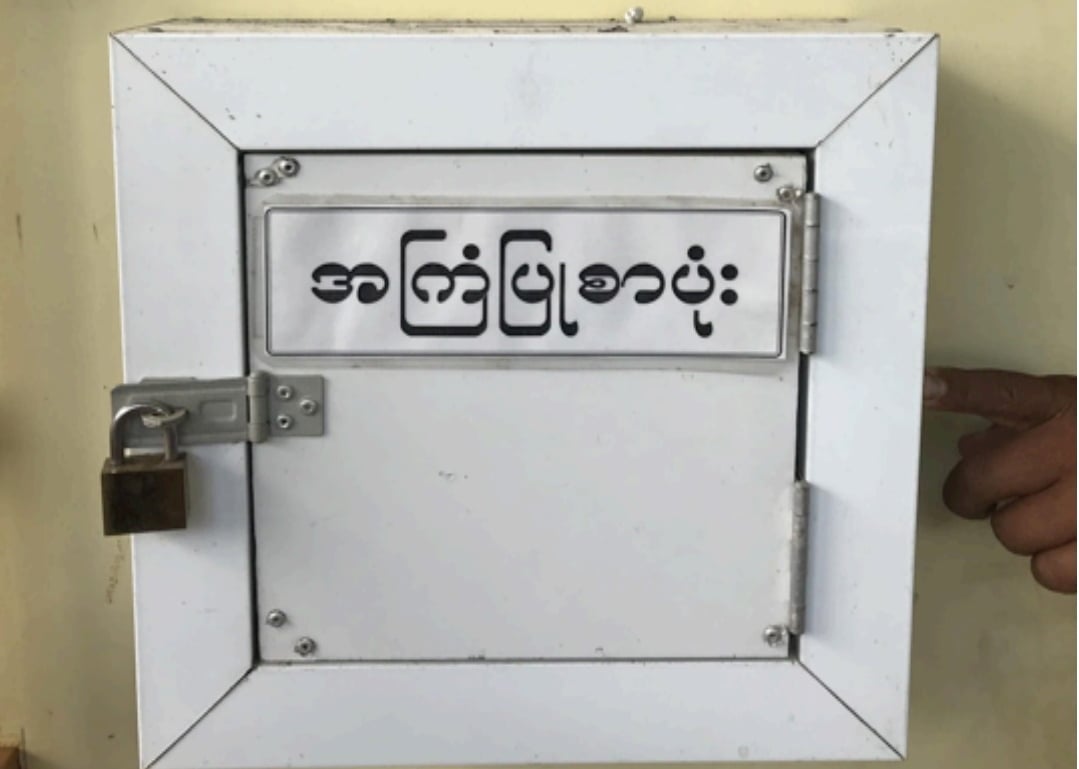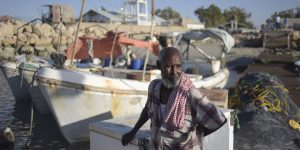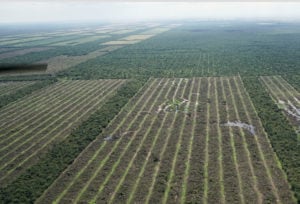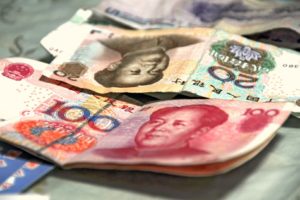In a riverside village near the Shwe Taung cement plant in Myanmar, a white suggestion box is nailed to the wall of the company’s office. Villagers can slip paper into the box to lodge complaints about problems they attribute to the plant, such as the diminishing water or air quality. But company staff and locals are unclear about how or if their queries would be addressed.
The Shwe Taung plant is among the first batch of projects that the Asian Infrastructure Investment Bank (AIIB) has financed since its inception in 2015. In December 2018, the bank established a new mechanism to supplement the rudimentary suggestion-box grievance systems that researchers say are commonplace. This will allow communities to communicate their problems directly to the bank’s headquarters.
Referred to as China’s World Bank, the AIIB is a multilateral development bank that now boasts 87 member countries, with China still holding a dominant 31% stake. The bank has been viewed as a test of China’s claim to multilateral leadership. Its founding maxim is to be “lean, clean and green”. This translates to shedding the bureaucracy of its peers while upholding high environmental and social standards – ones that China’s own development banks have yet to adopt. The bank’s new grievance mechanism is a step toward international best practice, but its shortcomings also renew a familiar criticism: that being lean and green is easier said than done.
Holding development banks to account
In the late 1980s, a proposed 160-metre Sardar Sarovar dam in western India sparked debate about the responsibility of multilateral banks to distant communities affected by their investments. The dam was part of a project financed by the World Bank to create the world’s largest irrigation system. Outcry over the social and environmental impacts of the project, including the displacement of 140,000 people, led the bank to commission the first independent review of one of its projects. Despite safeguards, the review showed that projects could lead to serious damage, particularly in countries without strong legal systems and civil society. Additional oversight was needed.
This controversy and others like it led to the creation of the first accountability systems for multilateral development banks – mechanisms that are now ubiquitous. These policies allow people to file complaints directly with a bank rather than through the companies that build projects. Going through companies can be risky or futile, as in the case of the Shwe Taung cement factory.
The premise, according to Kate Geary, co-director of Bank Information Center Europe, is that even though banks are not actors on the ground, their financing enables projects that can cause damage. “If you invest, you should be accountable,” she said. The number of complaints filed with multilateral development banks has increased over the years, showing the importance of these channels to local communities that often lack alternatives.
Making the AIIB accountable
The AIIB has established a series of environmental and social policies modelled on those of leading development banks. One of the most important was the bank’s Environmental and Social Framework, which required it to follow its peers in creating an accountability mechanism.
Delivering on that commitment, the bank’s new accountability policy allows two or more people to file complaints about the bank’s failure to implement the framework. If the submission is deemed eligible, it can trigger a compliance review that results in a management action plan to resolve any issues identified, or it can lead to a dispute-resolution process. The latter is often used when communities have already incurred losses, such as land grabs, and want to negotiate for concrete reparations.
Strong accountability mechanisms serve two key functions, says Geary: providing redress to affected communities and giving banks an opportunity to improve their own practices, the latter being particularly relevant to the AIIB as a new bank. Successful claims at other banks have altered institutional practices and resulted in major reparations. In 2004, communities brought a complaint against the International Finance Corporation (IFC), the private-sector lender in the World Bank Group, about the environmental and social impacts of an investment in palm oil. This led the company to issue a moratorium on land clearance and the World Bank Group to implement an 18-month ban on financing palm oil, while it re-evaluated the risks.
In late March this year, communities affected by AIIB projects can begin filing complaints, at which point the bank’s new policy will be put to the test.
Can the AIIB be lean and green?
Critics of the bank expressed consternation that the bank had begun investing before it established an accountability policy for communities. Although the final policy took many of their concerns into account, some still have reservations about the outcome, particularly regarding the accessibility of the bank to local communities. Natalie Bugalski, legal director of Inclusive Development International, said, “While the policy contains some innovative elements […] it falls short of international best practices in several important respects.”
She pointed to an issue at the very foundation of the policy. Community complaints have to be anchored in the project’s failure to comply with the bank’s own environment and social framework. Bugalski said, “Because these standards are far narrower in scope and much vaguer than internationally accepted standards, such as the IFC’s performance standards, serious harms suffered by communities may fall outside the purview of the mechanism.” For instance, Lowell Chow, a researcher at the Business and Human Rights Resource Centre, noted that the framework requires the bank to “consult” indigenous communities in their projects but does not require it to obtain their “consent”, unlike other banks.
Another issue civil society advocates see is that the mechanism does not apply to projects that the bank finances with other institutions. These co-financed projects constitute 65% of its portfolio. For these, the bank will defer to the accountability mechanisms of other banks but remain involved in the process, according to the policy. Other banks have stronger policies, but some lack key features of the AIIB’s. For instance, the World Bank Inspection Panel does not include a dispute-resolution function for brokering settlements directly between a bank client and affected communities. “We believe that affected people should have the freedom to choose the mechanism that makes most sense to their particular situation and the outcomes they are seeking,” Bugalski said.
This issue will fade over time as the bank matures and moves toward more independent financing, but for the time being community members will have to look to other banks or the local company to address their issues. This is an example of how the bank’s leanness can work against community interests, said Kate Geary.
For the 35% of the bank’s projects that are standalone, communities will be able to file complaints through the AIIB’s own grievance mechanism. However, the policy states that complainants must first seek redress from bank management or local grievance redress mechanisms, like the suggestion box in Shwe Taung.
Kristen Genovese, senior researcher at the Centre for Research on Multinational Corporations, said that in her extensive experience working with communities, these company-run mechanisms have never proved useful. She said the AIIB is a complete outlier on this front. “There are no other banks that require you to use the project-level grievance mechanism first.”
Having to file complaints locally first may expose complainants to the risk of retaliation from the local government or company. However, the AIIB has adopted a progressive clause that acknowledges this risk and states that if locals face such threats, they do not have to file locally before reaching out to the bank.
The AIIB declined to comment on the new policy. In a press release, bank president Jin Liqun said, “Ensuring that the environment and local people are not harmed by AIIB-financed projects is a cornerstone of our lean, clean and green values. This mechanism will enable us to respond quickly to concerns from project-affected people so we can work with our clients to address those issues in a timely manner.”
An example for Chinese banks?
Despite criticism, Zhang Jingjing, an environmental lawyer and lecturer at the University of Maryland Law School, sees the policy and the bank as exemplary compared to some of China’s overseas development practices and institutions.
Zhang helps communities in developing countries sue over issues related to Chinese development. From Sierra Leone to Guinea, the Chinese banks financing projects she has worked on offer no channels for locals to complain. Although she acknowledges the limitations of grievance mechanisms, she sees the AIIB’s policy as an edifying example for these institutions. “I hope Chinese banks can learn from this and follow AIIB to set up their own social safeguard framework as well as this mechanism,” she said.
China has helped establish the AIIB and the New Development Bank (NDB), and both outperform the country’s own development banks on environmental and social standards, according to a recent analysis. However, China’s domestic policy banks still dwarf the AIIB in scale and global reach. In 2016, AIIB lending was less than 1% of China’s total investment into Belt and Road countries.
American University associate professor Tamar Gutner recently cautioned that the AIIB may be a distraction from the larger Chinese banks: “A clear or growing contradiction between China’s actions outside the AIIB and the bank’s policies and goals could still risk turning the AIIB into the Potemkin village of international organisations – a showcase of good intentions in a larger sea of hypocrisy.”
For now, the AIIB’s own commitment to international best practices will be tested when its new policy goes into effect in March. Genovese said that the policy language is important, but implementation is where its true commitment to accountability will be made clear. If properly implemented “you can have a policy that isn’t spectacular but is still very effective,” she said.
This was first published on chinadialogue.net.
AIIB plans to ‘conditionally’ support coal power
Why scientists fear the AIIB
Learning hard lessons: AIIB and the Tarbela dam in Pakistan






![Amne Machin, a sacred mountain on the Tibetan plateau, which is changing far quicker than the world realises [image by: Joshua Cohen]](https://dialogue.earth/content/uploads/2019/02/The-Tibetan-plateau-is-changing-far-quicker-than-the-world-realises-300x225.jpg)

![Only a little grass and a few animals grazing near the Deosai National Park [image by: Amar Guriro]](https://dialogue.earth/content/uploads/2018/09/16-B-300x200.jpg)